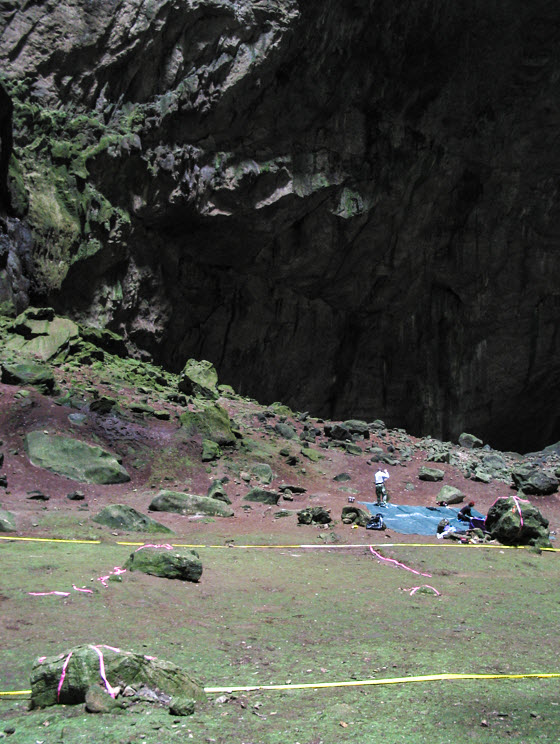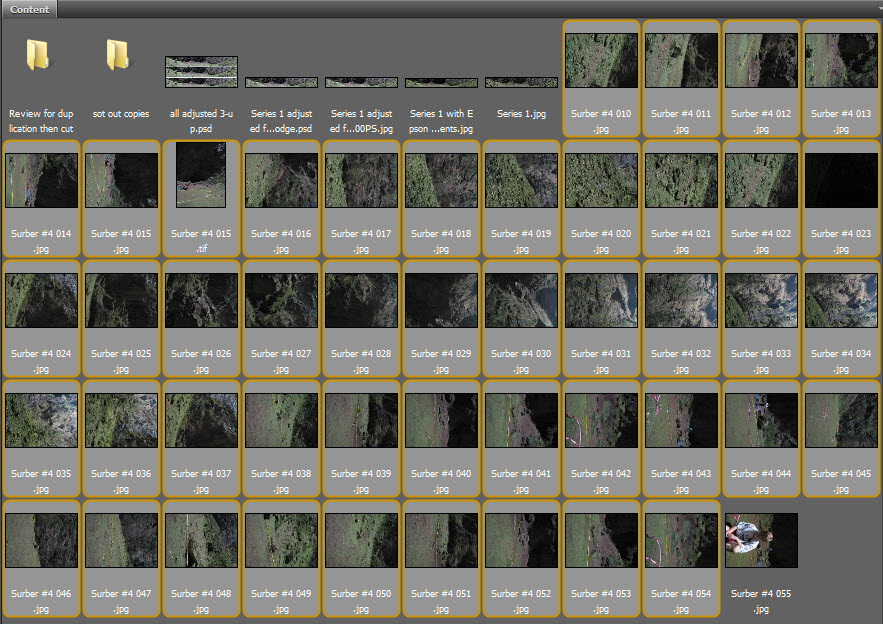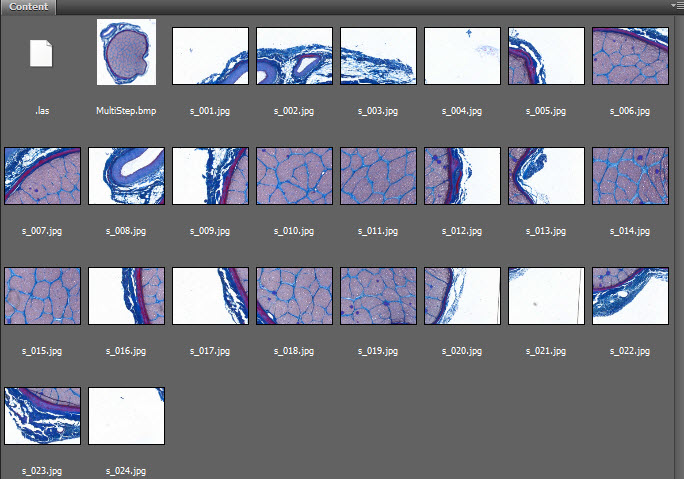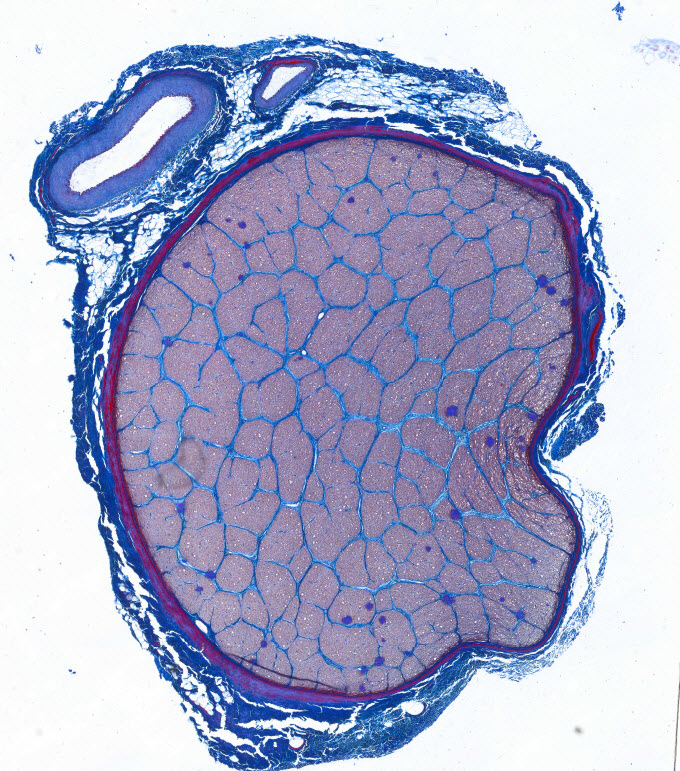Image Stiching multi-shot technique
Image stiching is a multi-shot technique that imports slightly overlapped images and exports a single blended image with an angle of view that approximates the sum of all individual views.Project 1 description
Aquismón Mexico has a 1,400' sink hole called Sótano de las Golondrinas (Cave of the Swallows). Besides being an amazing natural spectacle in its own right, the cave is also a destination for BASE jumping expeditions. The cave's 1,400 foot depth allows for interesting freefall and canopy time on the way to the bottom.

BASE jumper backward exit into cave.

The cave floor is about 7 acres, but has only one flat area suitable for landing a parachute. Before each expedition becomes fully operational, the landing area is cleared and major obstacles are marked.

Photographing the entire landing area requires more than one exposure. For this project, a Canon G9 was placed on an indexed tripod and 47 overlapping shots were taken.

The final stiched image covers about 360° and is 15,000 X 2,157 with a 93MB file size.
Project 2 description
Microscopy at high magnification produces great detail at a small angle of view. The effect is similar to trying to examine a large painting while looking through a straw. In order to create highly magnified images with a larger angle of view, stitching techniques like the one previously described for the cave panorama can also be applied to microscope images.

The stack shown above includes 24 images covering different areas of a magnified and stained histology section.
The Leica Application Suite MultiStep program was used to stich the source images together.

The MultiStep stiched image provides high resolution insight into the entire sample. Stiched images such as this provide greater insight for research applications and time savings for pathology applications.